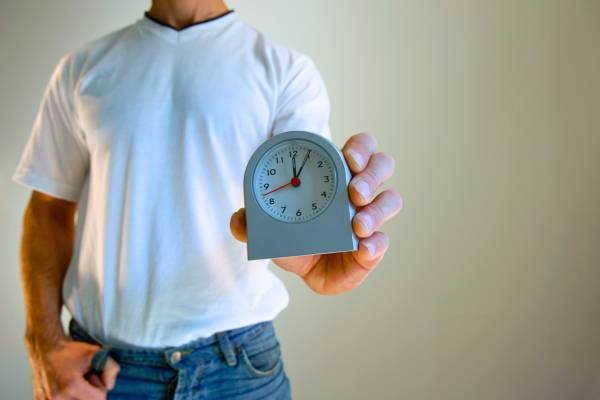Are your clock hands stuck, loose, or not moving at all? Learning how to repair clock hands can save you time and money while restoring your cherished timepiece. Whether you have a vintage heirloom or a modern wall clock, this guide will walk you through the essential steps to diagnose and fix common clock hand issues. With the right tools and a bit of patience, you can make your watch look and function like new again. Follow our expert tips to ensure your clock hands are properly aligned and working smoothly. Say goodbye to frustrating clock problems and enjoy accurate timekeeping once more!
How to Repair Clock Hands: A Comprehensive Guide
- Gather tools: small screwdriver, tweezers, pliers, cleaning cloth, clock oil, and replacement hands.
- Diagnostic Issues: Check for stuck, loose, or non-moving hands, and inspect for damage.
- Remove hands: Carefully detach clock needles using a small screwdriver.
- Clean and Inspect: Clean hands with a soft cloth and check for wear or bends.
- Repair or Replace: Straighten bent hands with pliers or replace if damaged.
- Reassemble: Reattach needles securely and align properly.
- Test and Adjust: Set the correct time, test for smooth operation, and adjust as needed.
Tools and Materials Needed
To begin your clock repair journey, gather the essential tools and materials needed to fix clock hands. You’ll need a screwdriver, tweezers, and pliers for precise adjustments. Additionally, have replacement hands on hand, along with a cleaning cloth and watch oil for maintenance. Safety is paramount, so ensure you’re working on a stable surface with good lighting. Wear protective gloves to avoid injury from sharp parts, and keep small components organized to prevent loss. By having these tools and materials ready, you’ll be well-prepared to tackle any clock hand repair with confidence, ensuring your timepiece runs smoothly and accurately.
Diagnosing the Problem

Diagnosing the problem with your clock hands is the first crucial step in the repair process. To identify if the issue lies with the needles or the clock mechanism, observe if the hands are stuck, loose, or not moving at all. Common signs include hands that overlap and get stuck or needles that wobble. Begin by safely removing the clock hands for inspection: Gently pry off the hands using a small screwdriver or tweezers, ensuring you don’t damage the watch face. Inspect the removed needles for bends or wear, and check the clock mechanism for obstructions. A proper diagnosis ensures effective repair and smooth operation of your watch.
Removing the Clock Hands
Removing clock hands is a crucial step in clock repair. Begin by gently unscrewing the center nut while holding the hands to prevent them from bending. Carefully lift the needles away from the watch face, ensuring you don’t damage the delicate parts. Use tweezers if necessary for precision. Once removed, inspect the needles for any signs of wear or damage, such as bends or corrosion. Keep the parts organized to avoid losing any small components. Handle the clock hands with care to ensure they remain intact and ready for reassembly. Proper removal and inspection will make the subsequent repair steps much smoother and more effective.
Cleaning and Inspecting the Clock Hands
Properly cleaning and inspecting your clock hands is crucial for maintaining accurate timekeeping. Start by gently removing the clock hands using tweezers or pliers. Use a soft cloth dampened with a mild cleaning solution to carefully wipe away dust and grime. Inspect the needles for any signs of wear, tear, or damage, such as bends or cracks. Look closely at the attachment points to ensure they are not loose or worn out. If you notice significant damage, consider replacing the needles. Otherwise, make the necessary repairs to restore their original condition. Clean, well-maintained clock hands ensure your timepiece functions smoothly and accurately.
Repairing the Clock Hands
Repairing clock hands involves careful techniques to ensure accurate timekeeping. To straighten bent clock hands, gently use pliers to adjust them back into position. For loose or wobbly needles, check the nut securing them and tighten it as needed, using a small wrench for precision. If the needles are still not secure, consider adding a washer for additional stability. Ensuring the clock hands are properly tightened and aligned will prevent further issues and enhance the watch’s functionality. With these tips, your watch will not only look better but also keep accurate time, providing a reliable and attractive timepiece for your home.
Replacing the Clock Hands
When replacing clock hands, start by selecting the right replacement hands that match your clock’s size and style. Measure the length and ensure the new hands fit the watch face. To install, gently press the new needles onto the clock mechanism, ensuring they are secure but not too tight. Check that the hands are not touching each other or the watch face to prevent interference. Align the needles correctly, setting them at the right time, and test the clock to ensure smooth movement. Proper installation ensures accurate timekeeping and a refreshed look for your watch.
Reassembling and Testing the Clock

Reassembling and testing your clock is crucial for ensuring accurate timekeeping. Start by carefully reattaching the clock hands to the watch face, making sure they are secure and properly aligned. Next, set the correct time, ensuring the needles move freely without obstruction. Test the watch to confirm smooth operation. If you notice any issues, such as hands not moving or sticking, troubleshoot by checking for alignment problems or loose connections. Adjust as needed until the clock runs perfectly. Proper reassembly and testing will ensure your watch functions reliably and keeps accurate time, enhancing its longevity and performance.
FAQs for “How to Repair Clock Hands?”
1. What tools are needed for clock hand repair?
💥 small screwdriver, tweezers, pliers, cleaning cloth, watch oil, and possibly replacement hands.
2. How do I identify issues with clock hands?
💥Look for stuck, loose, or non-moving hands and inspect for damage after removal.
3. How can I straighten bent clock hands?
💥Gently use pliers to bend them back into shape, applying minimal force.
4. What if the clock hands don’t move after reassembly?
💥Check for obstructions and ensure hands are not touching each other or the clock face.
5. How do you ensure accurate timekeeping post-repair?
💥Set the time, observe for a few hours, and make adjustments if needed.
Conclusion
In conclusion, successfully learning how to repair clock hands can save you both time and money, and it’s a rewarding skill to master. By following the steps to diagnose issues, carefully remove and inspect the needles, and make necessary repairs or replacements, you can restore your watch to perfect working order. Reassembling and testing the clock ensures accurate timekeeping and longevity. Remember to handle all parts with care and patience. Regular maintenance and timely repairs will keep your watch functioning smoothly for years. Whether it’s a family heirloom or a modern piece, knowing how to repair clock hands enhances its value and reliability.
